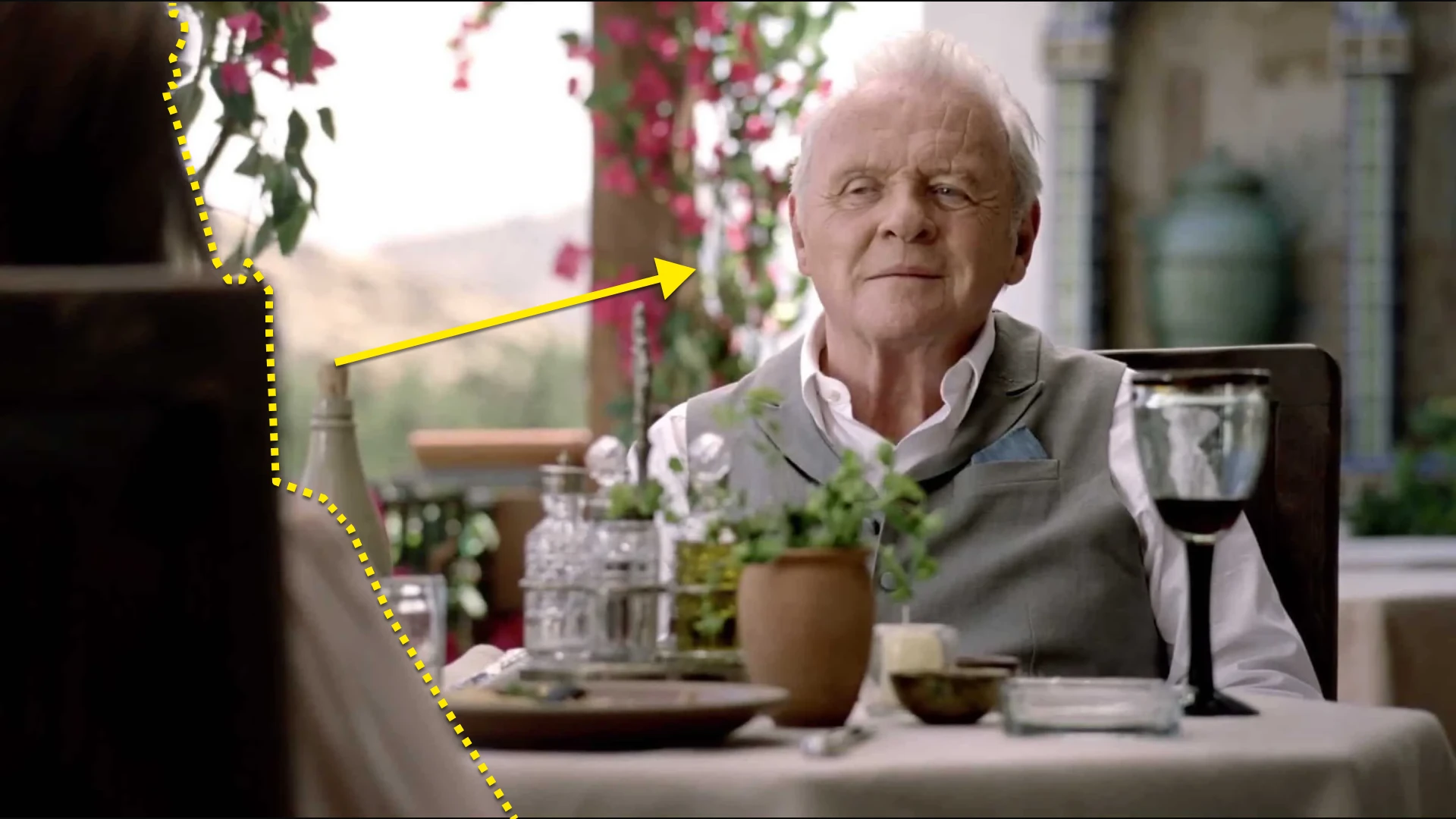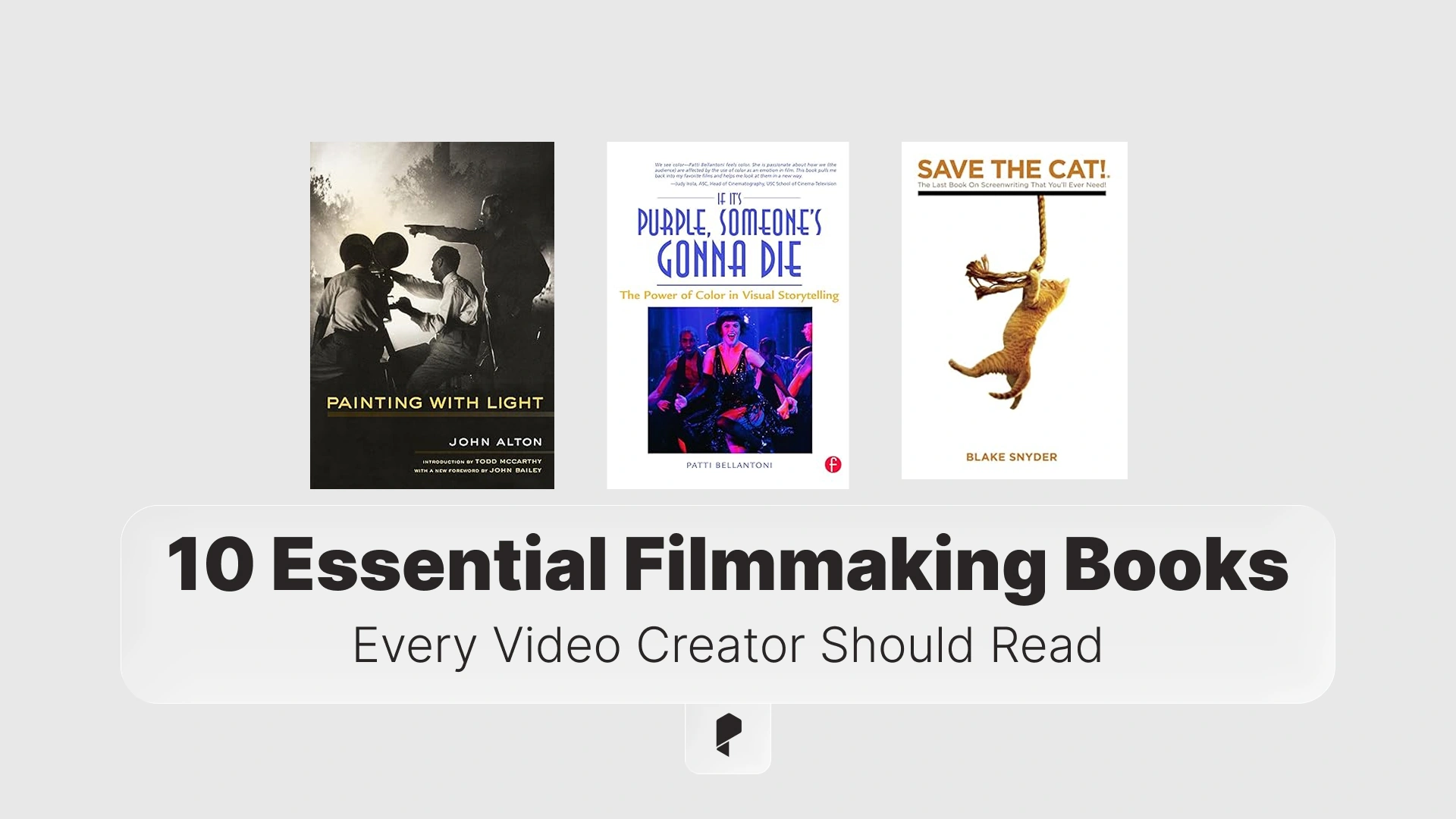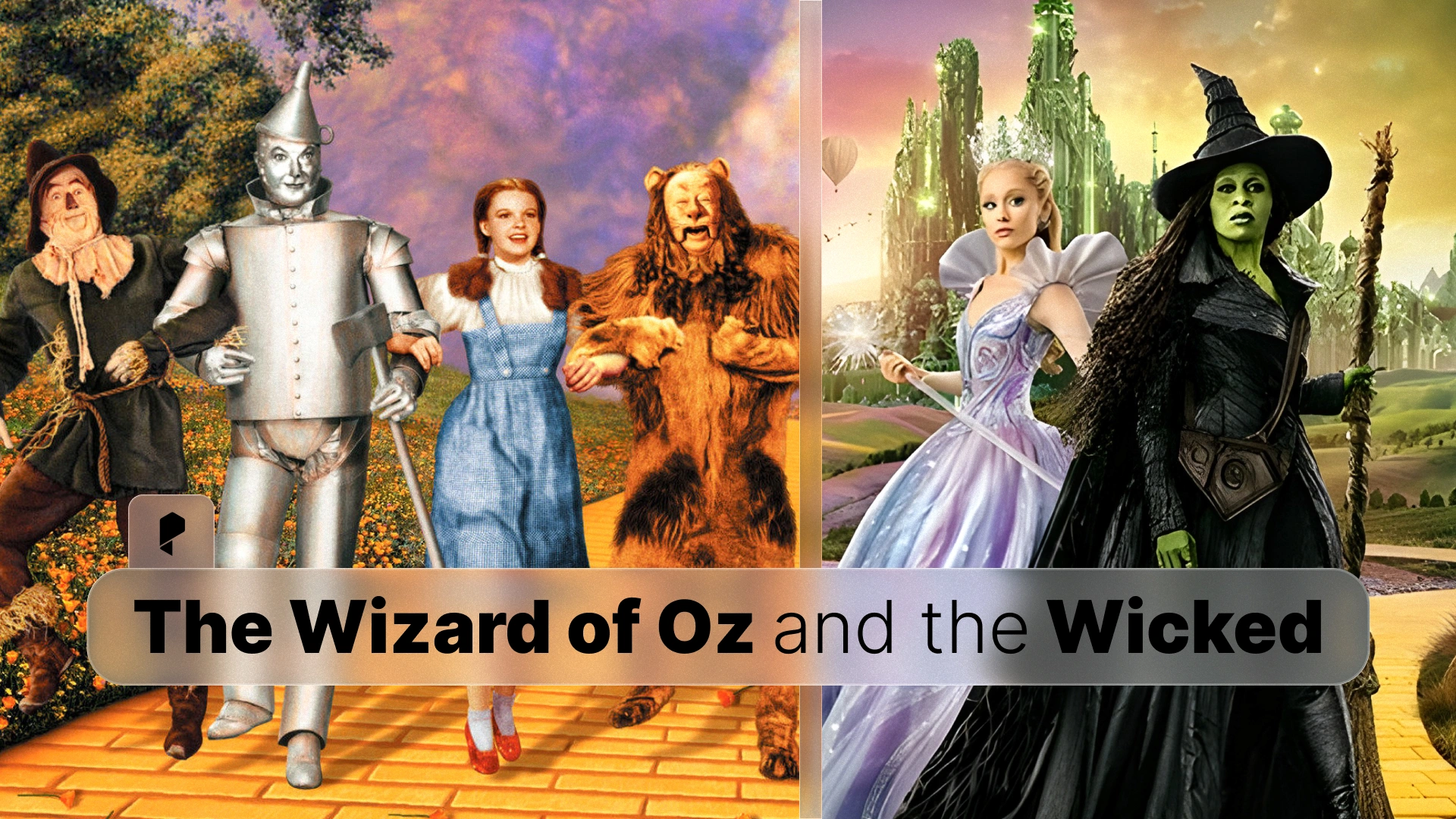What is an Over-the-Shoulder Shot and Why It’s Crucial in Filmmaking

The OTS shot (over-the-shoulder shot) is important not only for its dramatic effect but also because of its ability to provide visual cues to the audience about a character’s perspective. For instance, Star Wars and Dune each utilize the OTS shot to create tension, highlight the emotional stakes, and show a character’s viewpoint. Whether it’s a climactic face-off or a subtle moment of reflection, the over-the-shoulder shot reinforces both action and meaning.
Looking to explore more on camera techniques? Check out our guide on Explaining Different Types of Camera Angles in Cinema.
The Basics of the OTS Camera Angle
What is an Over-the-Shoulder Shot?
An over-the-shoulder shot is a camera angle that positions the viewer behind one character, usually over their shoulder, so they can see what the character sees. This creates a sense of intimacy and involvement, as if the audience is standing right next to the character, looking out through their perspective. Often used in dialogue scenes, it captures the subject the character is looking at, framing the action or interaction while keeping the viewer grounded in the character’s point of view.
The OTS meaning in film is straightforward: it’s a way to emphasize connection or confrontation between characters. The shot can also be used for establishing shots where the character’s positioning or interaction within the environment is vital.
Looking for more filmmaking tools? Enhance your shots with creative elements like Light Leaks to add some unique visual flair to your work.
Importance of Framing and Angles
The framing in an OTS shot is essential to its effectiveness. The camera typically rests behind the character’s shoulder and head, with the shot focusing on the object of their attention. The angle should convey a clear sense of who’s in focus, and whether the character is engaged or distant from the subject in the frame. A well-executed OTS camera shot film will subtly guide the viewer’s understanding of relationships, motivations, and context. The depth of field, lighting, and even the choice of lens can make a huge difference in conveying the right emotional tone.
Want to give your shots a more cinematic look? Explore the Letterbox Film Frames to help frame your shots like the pros.
Why the OTS Shot is Crucial in Dialogue Scenes
In movies like Star Wars, the over-the-shoulder shot creates an emotional connection between characters, showing their reactions to what’s unfolding in front of them. For example, when Luke Skywalker faces off against Darth Vader, the OTS shot enhances the intensity of the moment, providing a clear view of their respective expressions and the weight of their decisions.
Similarly, The Simpsons uses this shot technique to establish humorous or dramatic tension between characters. The Simpsons over-the-shoulder shot often serves as a comedic device in scenes involving confrontational dialogue, enhancing the timing and punch of the interactions.
By employing the over-the-shoulder shot in dialogue, filmmakers guide the viewer’s understanding of character dynamics. They make the audience feel as though they are part of the conversation, amplifying the emotional undertones and providing subtle visual cues to the relationships in the scene.
Examples of OTS Shots in Iconic Movies
Over-the-Shoulder Shots in Star Wars
The over-the-shoulder shot is used to great effect in Star Wars, especially during tense, pivotal moments between key characters. One of the most iconic scenes involving this shot takes place during the climactic battle between Luke Skywalker and Darth Vader. The OTS shot places the audience behind Luke, highlighting his emotional struggle as he faces his father, Vader, in a life-or-death confrontation. The camera angle emphasizes the tension in the scene, capturing both the hero’s inner turmoil and the looming threat of the enemy.
The shot, framed from Luke’s perspective, conveys his sense of vulnerability and determination. This enhances the emotional stakes of the battle, making the viewer feel as if they are right there with him, ready to face the consequences of the moment. The Star Wars over-the-shoulder shot also helps to establish the relationship between Luke and Vader, offering a visual representation of their conflicting perspectives, values, and destinies.
Over-the-Shoulder Shots in Dune
Dune (2021) offers a striking use of the over-the-shoulder shot to establish a sense of scale and tension. In a scene where Paul Atreides stands in front of a massive sandworm, the OTS shot is employed to show the vastness of the desert and the perilous journey ahead. The shot provides the viewer with a sense of what Paul sees, amplifying the overwhelming power of the sandworm and the danger of his surroundings.
In another pivotal moment, Paul faces a difficult decision that will shape his destiny. The over-the-shoulder shot not only conveys his perspective but also serves to enhance the thematic depth of the film. As Paul looks toward the future, the shot offers insight into his inner conflict and the weight of his choices. The use of this technique elevates the narrative, deepening the connection between the audience and the character.
OTS Shots vs. Reverse Shots in Filmmaking
The Difference Between Over-the-Shoulder and Reverse Shots
In filmmaking, over-the-shoulder shots and reverse shots are often used together, particularly in dialogue-heavy scenes. However, these shots serve different purposes and are framed from distinct perspectives. The OTS shot typically shows the back of one character as they look at something or someone. It establishes a connection between the character and the subject they are engaged with, providing a sense of immersion and intimacy.
On the other hand, the reverse shot frames the scene from the opposite perspective, focusing on the character being looked at or the subject that is the object of attention. Reverse shots are commonly used to show the reactions of the character who is being observed. Together, the over-the-shoulder shot and the reverse shot offer a balanced view of the conversation or interaction, allowing filmmakers to switch between perspectives to emphasize emotions, motivations, and shifts in power.
When to Use an Over-the-Shoulder Shot vs. Reverse Shot
Choosing whether to use an OTS shot or a reverse shot largely depends on the narrative function of the scene. If the goal is to establish perspective and intimacy, the over-the-shoulder shot works well, as it allows the audience to see the world through the eyes of the character. The reverse shot, however, is useful when the filmmaker wants to reveal a character’s reaction to the situation, often adding layers of tension or surprise.
In complex dialogue scenes, alternating between the OTS shot and the reverse shot can create dynamic visual storytelling. By switching between perspectives, the filmmaker can amplify the emotional intensity of the interaction, giving the audience a deeper understanding of the characters’ inner lives and the stakes of the conversation.
How to Frame an OTS Shot in Film
Camera Angles and Setups for the Over-the-Shoulder Shot
Framing an over-the-shoulder shot requires a strategic approach to camera angles and composition. The shot is typically composed with the subject of interest in the foreground, creating a visual connection between the viewer and the character’s perspective. This angle allows the audience to feel like they are in the character’s shoes, experiencing the scene from their point of view. It’s crucial to consider the focus and depth of field, making sure the shot highlights what’s important in the frame.
When positioning the camera, it’s common to have the OTS shot slightly tilted or offset to one side to create a more dynamic feel. The character’s shoulder and head are positioned in such a way that they’re visible, but the focus remains on the subject or action that the character is engaged with. By experimenting with the camera’s positioning and depth, filmmakers can further emphasize emotions, tension, and the perspective of the character.
Lighting Considerations for an Over-the-Shoulder Shot
Lighting plays a vital role in OTS shots, as it helps convey the mood and tone of the scene. A well-lit over-the-shoulder shot can provide clarity and focus, drawing the viewer’s attention to the subject while maintaining the intimacy of the moment. In contrast, a poorly lit shot can obscure key details and create a sense of unease, which might be appropriate for certain scenes.
To properly light an OTS shot, ensure that the light source is positioned in a way that highlights the character’s face and the subject in focus. If you’re shooting a night scene or a dark atmosphere, softer, low-key lighting can create a more dramatic and intense effect.
OTS Shots in Classic Cinema
Over-the-Shoulder Shots in Classic Films
While modern cinema has made great use of the over-the-shoulder shot, the technique has been present in classic films for decades. In classics like Casablanca and Citizen Kane, OTS shots are used not only to reveal character emotions but also to create a sense of depth and spatial relationships within the frame.
In Citizen Kane, Orson Welles utilizes over-the-shoulder shots to emphasize the isolation of his protagonist, Charles Foster Kane, as he navigates through the complex world of wealth and power. The shot works to place the audience in Kane’s shoes, offering insight into his internal struggle and his fractured relationships.
Best Over-the-Shoulder Shots in Cinema History
From Alfred Hitchcock’s iconic thrillers to modern masterpieces like The Dark Knight, some of the best over-the-shoulder shots in cinema history have shaped the way filmmakers tell stories. These shots are celebrated for their ability to heighten suspense, convey complex emotions, and reveal intimate details about characters.
One of the most famous OTS shots in cinema is from Hitchcock’s Psycho, where the camera positions itself behind Janet Leigh as she takes a fateful shower. The tension builds through the shot, using the character’s perspective to heighten the audience’s anxiety.
Conclusion
By the way, if you’re working on a film project and want to add a creative edge, check out Pixflow’s Light Leaks for enhancing your shots or explore Letterbox Film Frames to give your project a professional, cinematic look.
Disclaimer : If you buy something through our links, we may earn an affiliate commission or have a sponsored relationship with the brand, at no cost to you. We recommend only products we genuinely like. Thank you so much.





